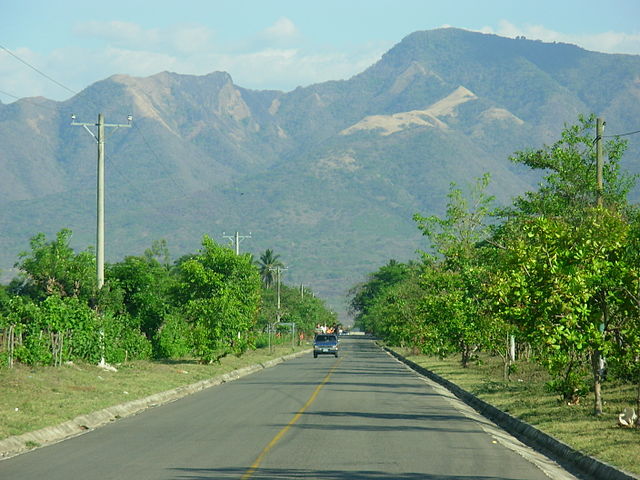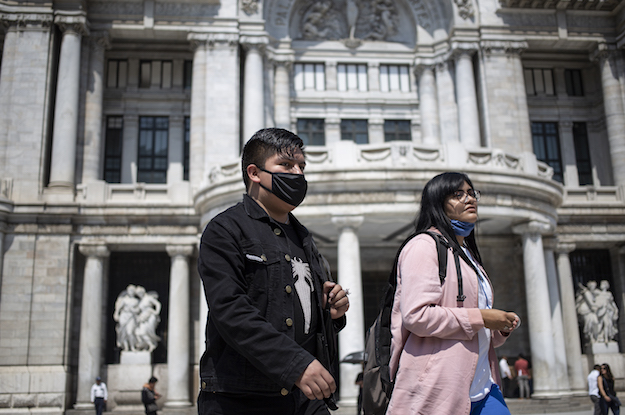When the road is clear, the drive from Guatemala City to Izabal, about 205 miles away, takes just over five hours. Jose Rodríguez was lucky to make it in eight.
Rodriguez, who travels all over the country as a contractor refurbishing pharmacies and supermarkets, was on his way to a job in Izabal this September when he was forced to make a detour – two days of heavy rain had collapsed a bridge on the Jacobo Arbenz Guzmán highway that connects the capital with Guatemala’s northeastern coastal region. Ever the enterprising small-business owner, Rodríguez decided to ford part of the river below in his pickup truck.
Rodriguez isn’t alone: Anyone whose work requires traveling outside Guatemala’s capital to midsized cities and towns is often forced to confront infrastructure that is, at best, inadequate. A recent study by Dalberg, a development adviser, identified shortcomings in infrastructure as one of the major constraints to realizing the potential of what is Central America’s largest economy. As the study noted, generating more economic opportunities is critical to Guatemala’s future prosperity, and would also help reduce migration to the U.S. But curiously, infrastructure help is not part of the current funding priorities in the Plan of the Alliance for Prosperity in the Northern Triangle of Central America, in which the U.S. is a major partner.
Many observers believe that this represents a lost opportunity. An estimated 54 percent of Guatemalans live in urban areas, according to the National Statistics Institute (INE) – many of them in small or midsized cities and towns that are badly served by the country’s transportation network. Just one example: it’s only 60 miles from Guatemala City to Cobán in Alta Verapaz (one of the departments with the highest poverty rates in Guatemala), but because of the lack of a north-south highway, travelers must take a circuitous 131-mile route.
Modernizing the nation’s infrastructure to connect Guatemala’s “intermediate” or secondary cities is a key element of the country’s urban agenda launched this year. The importance of such cities to the nation’s future growth was also the main topic of the National Business Forum (ENADE) held on October 6 in Guatemala City. More than 3,200 participants in the forum discussed a 10-year, $6 billion plan to invest in modernizing the country’s transportation, power, water and telecommunications grids. Central to the plan was identifying the needs of nine intermediate cities that act as regional hubs. As part of the plan, the Foundation for the Development of Guatemala (FUNDESA) has further identified five key priorities for these hubs, based on an analysis of the productivity and competitive potential of Guatemala’s 340 municipalities. These five priorities were to strengthen local institutions; increase connectivity and telecommunications; promote intercultural awareness; develop incentives for innovation and product sophistication; and focus on urbanization.
Without close attention to infrastructure modernization, Guatemala’s poverty gap is likely to widen – and limit the country’s ability to utilize its rich human and natural resources. While inflation nationwide hovers around 4.6 percent, the lack of infrastructure and the associated lack of access to jobs and food resources have pushed it to 10 percent in many rural areas.
Some attention is being paid. A September 23 meeting in Washington D.C. focused on how the Northern Triangle of Central America can bridge the infrastructure gap. The meeting, attended by U.S. Vice President Joe Biden, representatives of the Inter-American Development Bank (IADB), the U.S. Department of State, and private sector representatives from Guatemala, El Salvador and Honduras, addressed four key infrastructure challenges: speeding up the pipeline for already-developed infrastructure projects; regulatory change and risk mitigation; market facilitation and standardization; and the adoption of solid cross-border investment principles.
The objectives received a solid endorsement from IADB President Luis Alberto Moreno, who said that the governments of Guatemala, El Salvador and Honduras need “an innovative financial vehicle” that allows for pre-investment and credit structuring to fund and accelerate the implementation of infrastructure projects. Moreno added that such a vehicle would have to be “independent, governed by a joint council with agile and transparent rules of implementation, and … able to meet a rigorous selection process, guided by probity and meritocracy.”
It couldn’t come a moment too soon for small business owners like José Rodríguez.
—
Zapata is the executive director of the Foundation for the Development of Guatemala (FUNDESA)






